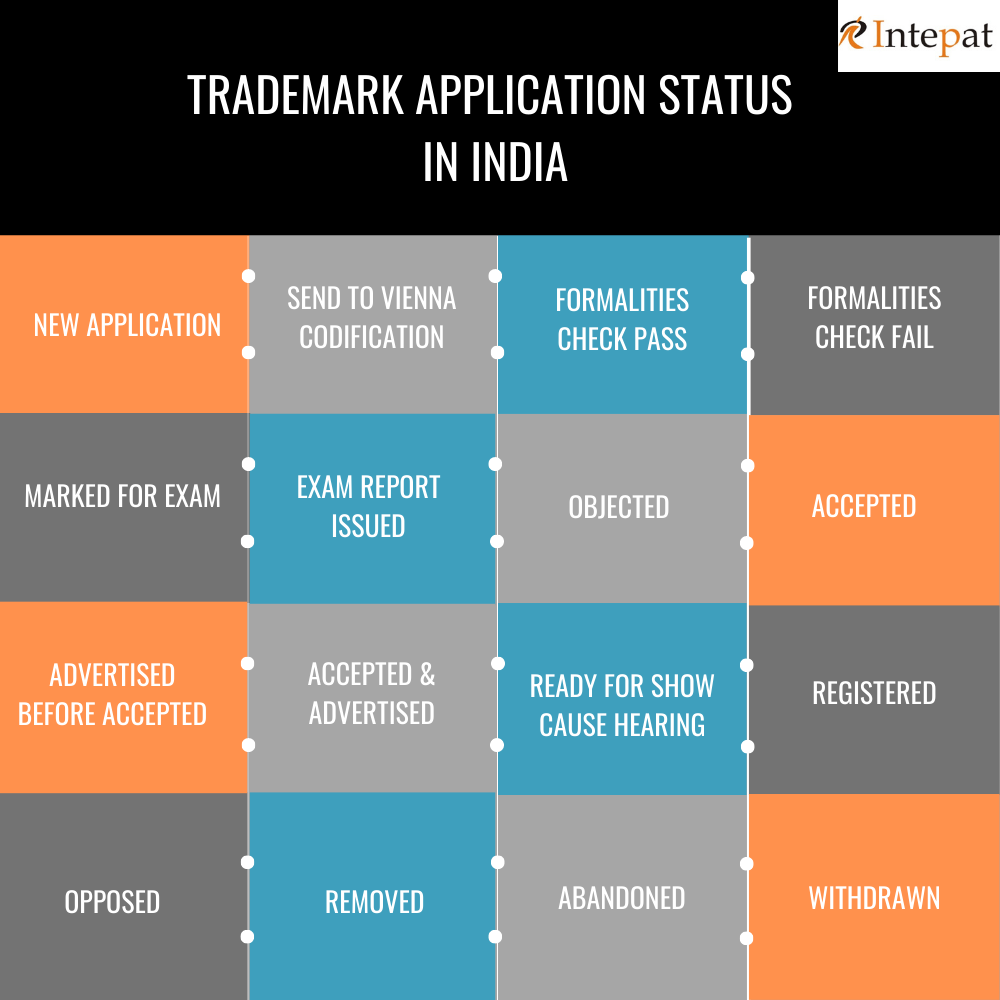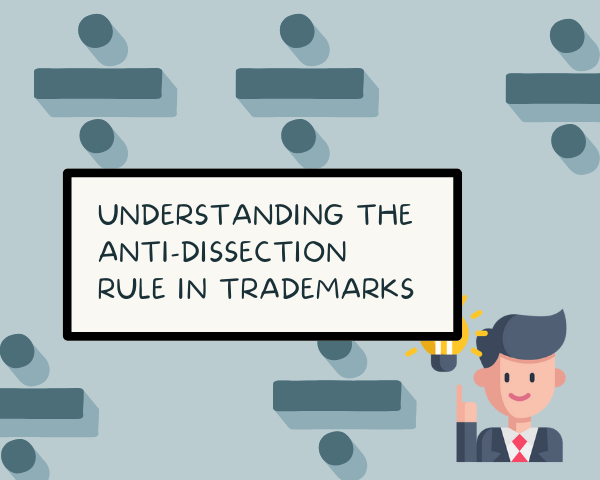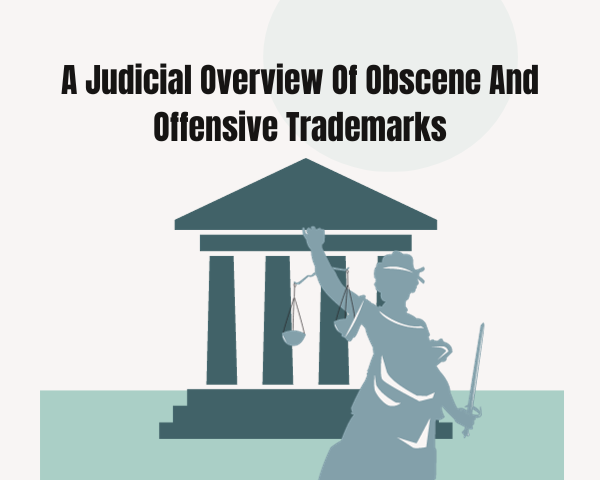Trademark Status:
After filing a trademark application, registering your trademark at Trademark Registry in India generally takes at least 6 -12 months. In this intermittent period, your trademark application goes through various stages, and you can check your trademark status, which is reflected online.
Each time the status of the trademark is updated against your application number, it shows the stage at which your application is.
It is essential for you to know the status of your trademark application, as some stages of a trademark application require you to take some action.
Before discussing the topics of the status of trademarks, let us understand the four essential steps to check the trademark status using the E-register of the trademark office in India.
Step 1: Click on the link E-register of Trademark IP India, and you will be taken to the Trademark Registry [TMR] website;
Step 2: Click on the Trademark Application Number/Registered Trademark button;
Step 3: Enter your Trade Mark/Application Number; and
Step 4: Enter the code shown and click on the view button to display the matching trademarks. Then, click on the trademark number, which will display the trademark details along with the status at the top left corner.
Trademark Application Status:
The following shows the various stages of trademark application.
1. New Application:
This states that the application has been entered into the database of the trademark registry. This is the first step, after which your trademark application form is processed. Once the application has been submitted, the brand name or logo, as specified in the application form, may be used with the “TM” indication.
2. Send to Vienna Codification:
Send to Vienna codification means that the trademark application will be sent to find the relevant Vienna code based on the image characters of the device mark. It is important to note that this status applies only to image trademarks such as logos, labels, etc. A trademark is assigned a numerical code if it contains a logo, label, or artwork, and this numerical code follows the Vienna Codification.
3. Formalities Check Pass:
This indicates that you have complied with all the procedural formalities. Procedural formalities involve filing a power of attorney, providing translation where any document is not in English/Hindi, and so on. If you have completed all the procedural formalities correctly, your trademark status will reflect as a formality check pass.
Moreover, the formalities and prerequisites can include the following –
i) Goods and services as per the NICE classification;
ii) Affidavit and evidence in case the mark claims the user date before the filing date;
iii) Necessary stamp duty and notarization required in the documents;
iii) Forms need to be correctly filled without any errors.
4. Formalities Chk Fail:
If some procedural formalities (as listed above) are incomplete or if you have not satisfactorily complied with them, your TM status will show as formalities chk fail. Hence, you will have to adhere to the check fail mentioned by the trademark registry.
5. Send Back to EDP:
EDP stands for Electronic Data Processing. In a trademark application, all the documents and data entries are digitized. Therefore, Send Back to EDP means that there has been some error during data entry that needs to be rectified. This status does not require the applicant to take any steps.
6. Send to PRAS:
The pre-registration amendment section reflects when you have filed an amendment before registering your trademark. The amendment may include the proprietor’s name, address, or the like.
7. Marked for Exam:
The marked for exam status signifies the beginning of the legal process. The marked for exam status means that an Examiner will take up your application to determine its registrability. The examiner will decide if your trademark qualifies for registration according to the provisions of the Trademark Act.
8. Exam Report Issued:
After the examiner conducts the examination, the exam report is issued. It would mainly contain the objection raised for refusing a trademark based on Section 9 or 11. Further, you can read more details on how to respond to the exam report.
9. Objected:
The examiner can raise objections against your trademark registration; the trademark status will show as objected. If your trademark is objected to, you must file a reply within one month of receiving the notice received via email. However, you may extend a month for submitting the response by filing the necessary extension form. Further, you can learn how to prevent objections. Once the Trademark examiner is satisfied with the response, the application will move forward to the accepted or advertised before accepted status. Or else, the examiner may call for a show cause hearing.
10. Abandoned:
If you do not respond to the trademark registrar within the stipulated time, such as the response to the examination report, your trademark application will be abandoned.
11. Accepted:
Accepted signifies that the examiner has not raised any objections during the examination, and thus your trademark will be published in the trademark journal before registration. At this stage, the applicant may not be required to take any action but keep a watch on the application’s progress.
12. Advertised Before Accepted:
The meaning of “advertised before accepted” is that your trademark has been published in the trademark journal. ‘Before Accepted’ means that your mark is published to allow any third party to oppose your mark before acceptance of the mark.
13. Accepted and Advertised:
The “accepted and advertised” points to you that your trademark has been advertised in the trademark journal. There are absolutely no changes that you need to make to the application.
14. Ready for Show Cause Hearing:
The “ready for show cause hearing” means that the examiner is not satisfied with your response to the examination, and, accordingly, you will be given a chance to explain why your mark should not be refused. You need to attend the hearing on a fixed hearing date; otherwise, your mark can be refused or abandoned. At this stage, the applicants can make their arguments during a hearing about why the trademark should be allowed for registration.
The applicant should ideally attend the trademark hearing on the day specified by the relevant trademark hearing officer. The officer may refuse or abandon the application if the applicant does not appear for the hearing.
15. Refused:
If the examiner is not satisfied with the response for the examination or in the hearing, he can refuse your trademark registration. You can learn more about how to overcome the refusal from here.
16. Opposed:
After the trademark is advertised in the trademark Journal, a third party has four months to oppose the published trademark. If there is third-party opposition, the trademark application status will show as opposed. Further, you can learn the trademark opposition procedure here.
17. Registered:
Now, your trademark is registered under the trademark registry. The Trademark Registry issues a certificate of registration to the applicant against their application once the application passes four months after the journal publication. At the same time, the trademark registration status on the website is updated as “Registered.”
At this time, you can download your trademark certificate from www.ipindia.nic.in.
18. Removed:
The trademark is removed from the trade marks register when the applicant fails to meet any of the Trademark Registry’s conditions. For instance, the removal may be because of the non-renewal of the trademark on time.
19. Withdrawn:
After you voluntarily withdraw your trademark application, your application status will show as withdrawn. For example, the applicant might opt to withdraw his application if the mark is not acceptable by the registry.
Therefore, monitoring the trademark status from time to time is vital. It would be simpler to get your mark registered if you adhere to the proceeding guidelines.




